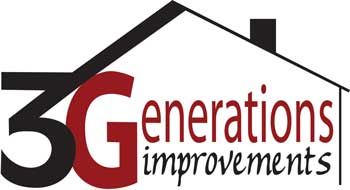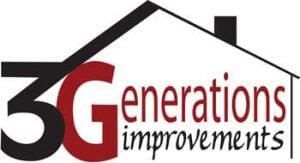Take a look at the great article from Remodeling Magazine. The trend of high Return on Investment for exterior projects continues on the entire West Coast. The 2017 Cost vs Value report is now complete by Remodeling Magazine and not surprisingly, window replacement continues to hold high Cost vs Value numbers. Upscale vinyl window replacement in the Sacramento area averages a cost recouped of 95.3% and wood at 82.8%. While the North Bay averages a cost recouped of 97.9% for wood window replacement and 87.2% for vinyl. Take a look at our 2014 blog post to see just how consistent these numbers have been. Please note, this is just the cost recouped when/if the home is sold and it does not take into account the monthly energy bill savings received.
Rest assured that new windows, siding and doors will increase the value of your home immediately and you will enjoy the improved energy savings and curb appeal as soon as 3 Generations Improvements leaves your house!
COST VS. VALUE
Looking for High Return When You Remodel? Start with Exterior Projects
Realtors say they pay off better than interior work

In the real estate market there is no denying the value of a home’s curb appeal. The 2016 Cost vs. Value Report underscores this importance, as four of the top five returns on investment are for projects relating to a home’s exterior.
Realtors across the country agree that curb appeal—those exterior features that can be seen from the street, plus the property’s landscaping—is the siren call that can lure potential buyers into investigating a home further.
“I am huge on curb appeal,” says Wilmington, N.C., Realtor Jessica Edwards. “It’s one of, if not the most important things when it comes to selling a house.”
Edwards says many customers first go online to investigate their options, and right away the exterior of the home can hook them or turn them off. “If it looks good from the outside, that sets a favorable impression going in,” she says. “If a client drives by and the is raggedy and they have other inventory to look at, then they’re likely to say they’ll come back to it”—and perhaps never return.
The top four exterior projects, ranking Nos. 2 through 5 on the survey, were manufactured stone veneer, garage door replacement for both mid-range and upscale projects, and mid-range entry door replacement, all recouping over 90% of their cost at resale.
Says Edwards, “In tract home neighborhoods, where houses typically have that cookie-cutter look, an added feature like stone veneer can visually enhance the property, and make it appear that it has more value.”
Delving deeper into the survey, which ranked 27 remodeling projects, 12 of the top 15 projects were exterior projects. They included door replacements, new siding, roof jobs, and window replacements. Not only do these replacement projects give a big bang for the buck in terms of payback at resale, they also cost considerably less than other projects on the survey, like kitchen and bath remodels and additions.
In the Maryland suburbs where Realtor Mary Lee Hancock works, the market still features numerous foreclosed and short sale properties.
“That look of neglect, oh dear god, you know before you open the door what kind of nastiness you’re going to see,” she says. It starts with the overgrown lawns and beat-up doors, and heads south from there. “If it looks shabby, you know you are in for a lot of work, and most people don’t want a hobby,” she says.
Hancock agrees with Edwards that when it comes to selling, curb appeal is paramount. “On the Internet, you had better have a decent picture there, and if you need to have something done, then do it,” she says. “The trick is to make it look so fabulous that can’t picture the amount of work that goes into it.”
Results of a 2012 Texas Tech University study on the impact of homes’ outside appearance, including landscaping, on pricing showed that curb appeal has a positive effect on house value, with prices increasing up to 17%. The study notes that house appearance and landscaping were approximately equal in their impact.
That same study also reveals that curb appeal is second only to house size in affecting a home’s value. Unlike interior improvements visible only to the occupants of the home, exterior upgrades are seen by all, and are a point of pride for the homeowners.
From streetside, it takes home buyers less than 12 seconds to decide yay or nay on whether they want to view a home, according to a survey of Realtors interviewed by representatives for a millwork manufacturer. Research by New York University cuts that decision-making time down to seven seconds, making curb appeal projects a critical—and high return—investment.

